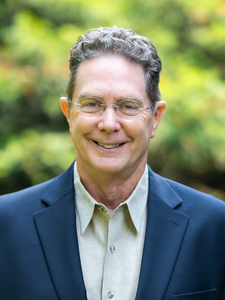When we think about priests in the Bible, we imagine bearded men burning incense and sacrificing animals. However, the priesthood is a premier theme throughout Scripture, and ultimately it is a role shared by all believers—men and women from every tribe and nation. The church doesn’t talk much about this role, but it is central to our identity as God’s people.
Here are 10 things you should know about the priesthood.
1. Priests are invited to draw near to the Lord.
The Levitical priests had a full job description, but the essence of their work was that they were invited to come into God’s house (the tabernacle). Could there be anything better? Of course, priests didn’t just casually wander into the Holy of Holies—the throne room itself—that was reserved for the high priest, once a year. But otherwise, the Lord cleansed and dressed his priests and they could wander around all other parts of the tabernacle, confident in his earnest invitation and blessing.
Who among us feels worthy of such an invitation to be this close to God? No one. Our sin and shame suggest that we should be far from him. But he created us to draw near, to be priests, and he makes a way for all of us to do that.
2. Adam and Eve were the first priests.
Priest is an important human identity, so it appears early in Scripture. In fact, Eden was the first tabernacle, and the garden within it was the first Holy of Holies—the place where God dwelled on earth. Adam and Eve were commissioned to work and keep the garden, and they enjoyed God’s presence. They were a royal priesthood. This same language is used for the priests who worked in the later wilderness tabernacle.
3. Though the Aaronic priests served in the tabernacle, all of Israel was called a kingdom of priests (Ex 19:6).
By dwelling in the tabernacle, God walked among all of them and made his dwelling among them (Lev 26:11-12). All of Israel was intended to have communion with their Lord. His presence was the distinguishing mark of the nation. Though there were those uniquely set apart to serve in the tabernacle, the Aaronic priesthood was always meant to give way to a priesthood that would be open to all God’s people.
4. Priests distinguished between holy, clean, and unclean (Lev 10:10).
Here is Scripture’s basic taxonomy. It sounds ancient and irrelevant, but we still have an intuitive sense of the distinctions. Unclean means that there is something wrong with us and we are sure everyone knows it. Clean means that we are free to move about God’s community without painful self-consciousness. Holy, we think, identifies someone other than ourselves. The holy belong to God and are close to him.
Think of these distinctions as distance from God. The unclean stayed outside the community until they were cleansed. The clean could come closer to God’s house, but not too close. The holy were brought into God’s house. Who would have thought that, in Christ, we are a holy people (1 Pet 2:9) with rooms in God’s house (John 14:2)?
5. Priests worked in God’s house, and like most any house, it can tell you a lot about its primary resident.
God’s tabernacle was minimalist, which brings attention to every feature, and it all revealed Jesus. When priests walked into his courtyard, they passed the altar. There was no other way into God’s house—sin is our deepest problem. Further in, they reached the water basin at which they washed their hands and feet. This points to how Jesus himself washes our feet from the daily grime of life (John 13). Next was God’s house itself. Priests passed through curtains that had angels embroidered on them—they were moving into the heavenly court. This is a trip that all God’s people have made and continue to make.
6. Jesus is not only our High Priest; his image is etched on everything in the tabernacle.
The Gospel of John is the New Testament book that connects the tabernacle to Jesus in every way. John’s gospel was the only one written after the destruction of the Jerusalem temple in 70 A.D., and he wanted to assure his readers that temple worship would, indeed, continue in its fullness in Christ. With this in mind, the gospel begins with John the Baptist announcing, “Behold, the lamb of God who takes away the sin of the world” (John 1:29). Jesus is the light, the bread of life, and the water of life—all these are temple references (the lampstand, the bread of presence, washing basin). We, as priests, now have our house in him.
7. In the New Testament, our priestly role is taken over by the word saint.
As we rummage through the New Testament looking for our priestly identity, it seems largely absent, except for Peter’s comment that we are a “royal priesthood” (1 Pet 2:5,9). But we shouldn’t be surprised that, given the conflicts between Jesus and the priests of the day, the epistles chose the word saint to continue this theme. Saints are holy ones, and holy ones belong to God. They are close to him and he does not give them up. A typical New Testament greeting is, “To all the saints.”
8. The Apostle Paul writes that we are now the Holy of Holies.
A New Testament image for you and for the church is that, as priests, we are “living stones,” part of a “spiritual house” (1 Pet 2:4-5, also Eph 2:19-22). That house is none other than the Holy of Holies itself. We are now the place in which heaven and earth meet. God walks among us through his Spirit who dwells in us. When those who had been to Jerusalem heard this, they remembered the temple, which by all accounts, was beautiful and glorious.
9. Scripture begins and ends with priestly images.
Our story as priests aims for the time when Christ will unite all things in himself (Eph 1:10). The heavenly Holy of Holies will descend to earth (Rev 21:2-3), and “the dwelling place of God [will fully be] with man.” Awe and intimacy, which are ours now in Christ, will be ours even more.
10. We now live out the priesthood of all believers.
Meanwhile, as we wait for the full descent of heaven to earth, we live as God’s priests—the body of Christ. We still have to work out local church structures and organization, but ordinary people now have the Spirit of God and do the work of ministry. Everyone is busy and needed. Our mission is to be close to the Lord, invite others to come closer to him, and speak words of blessing in the name of Jesus.
•
This article originally appeared on the Crossway website.
For a more detailed discussion of this topic, see Ed’s new book, Created to Draw Near.




